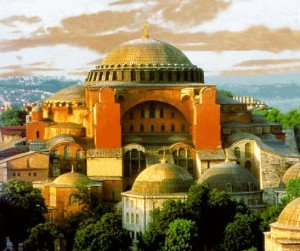 This weekend we anticipate the feast of the Nativity of Mary, the Mother of God. We anticipate this Marian feast this weekend because next weekend we celebrate the feast of the Exaltation of the Holy Cross. The feast of Mary’s birth is celebrated on Monday, the 8th of September. It is one of the twelve major feasts of our Church Year. It occurs at the beginning of the Church Year since, by this event, God’s incarnation in the Person of Jesus was made possible. So, in many ways, it is the beginning of the salvation history revealed through Jesus.
This weekend we anticipate the feast of the Nativity of Mary, the Mother of God. We anticipate this Marian feast this weekend because next weekend we celebrate the feast of the Exaltation of the Holy Cross. The feast of Mary’s birth is celebrated on Monday, the 8th of September. It is one of the twelve major feasts of our Church Year. It occurs at the beginning of the Church Year since, by this event, God’s incarnation in the Person of Jesus was made possible. So, in many ways, it is the beginning of the salvation history revealed through Jesus.
The new Church Year begins with these two major feasts since they set the stage for the entire Church Year. Both feasts present us with human models: Joachim, Anna, Mary and Jesus, who were totally committed to living out the plan of God even though it was truly challenging and difficult.
The Gospel records nothing about the nativity of Mary, her parentage, her childhood or youth, or her holy assumption into heaven. All this information comes from the tradition of the Church and the apocryphal writings. The Apocrypha are those writings which relate certain events from the life of Jesus or Mary that are not included in the Holy Gospel. Although the Church does not acknowledge these writings as authentic, trustworthy historical sources, she also recognizes that what they relate belongs to the authentic belief and tradition of the early Church. This is one reason why to two oldest Christian Churches, Orthodox and Catholic, maintain that the rule of faith must be a combination of both Scripture and Tradition. Holy Tradition includes not only the writings of the Fathers of the Church but also the liturgical practices of the Church. The chief source of information about the life of Mary is taken from the Proto-evangelium of James which was written around the years 170-180 CE. This apocryphal piece was held in high esteem among the Fathers, which included Andrew of Crete, John Damascene, Sophronius and Germanus to name but a few.
The feast of the Nativity of Mary is among the most ancient of the Marian feasts. It is mentioned already in the fourth century. Its official introduction of the feast is ascribed to Emperor Mauricius (582-602). The 8th day of September was selected because on that day nine months were completed from December 9th, the day on which the Church celebrates the conception of Mary by Anna and Joachim. This day was also selected because it marked the day on which a church in Jerusalem was consecrated in Mary’s honor.
Remember to keep holy Monday, the 8th of September, with prays to Mary.
